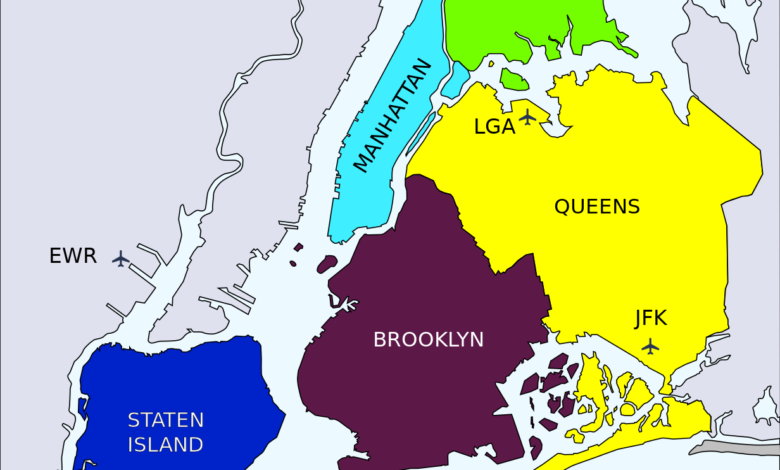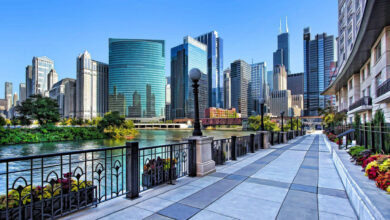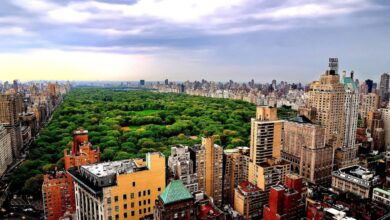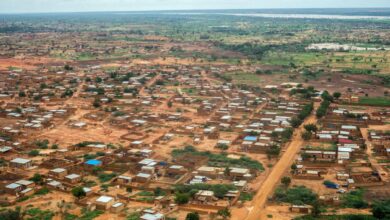
New York City, a bustling metropolis often termed as the “Capital of the World,” is renowned for its cultural, financial, and urban diversity. This complexity is partly due to its configuration into five distinct areas known as boroughs: Manhattan, Brooklyn, Queens, The Bronx, and Staten Island. Understanding the division and what each borough represents offers a window into the soul of New York City itself.
Historical Background of Boroughs
The consolidation of New York City in 1898 marked a pivotal moment, transforming it from a collection of separate cities and towns into the unified metropolis we recognize today. This merger created the five boroughs, each functioning as a unique county within the state of New York. This strategic unification aimed to facilitate efficient governance and infrastructure development, catering to the needs of a rapidly growing population.
Geographical and Demographic Characteristics
Geographically and demographically, each borough is a universe unto itself. Manhattan, an island bordered by rivers, is the bustling core of the city, known for its skyscrapers, cultural institutions, and economic hubs. Brooklyn, connected to Manhattan by the iconic Brooklyn Bridge, offers a blend of historic neighbourhoods and artistic vibrancy. Queens, the largest in area and very close to the geographic centre of the NYC area, is celebrated for its incredible ethnic diversity, housing communities from virtually every corner of the globe. The Bronx, north of Manhattan, is rich in cultural heritage and green spaces, including the New York Botanical Garden. Staten Island, the most suburban in character, offers a more relaxed pace of life and is accessible via the Staten Island Ferry.
Manhattan: The Heart of New York City
Manhattan stands as the pulsating heart of New York City, embodying its dynamic spirit. From the financial powerhouse of Wall Street to the neon-lit spectacle of Times Square, Manhattan is a symbol of global prominence. The borough is also home to Central Park, Broadway, and a host of museums that contribute to its standing as a cultural epicentre.
Brooklyn: The Borough of Diversity
Brooklyn boasts a rich tapestry of culture and innovation, making it a hub for the arts, cuisine, and entrepreneurship. Neighbourhoods like Williamsburg and DUMBO are synonymous with creativity, housing an eclectic mix of galleries, music venues, and artisanal markets. Brooklyn’s cultural diversity is also reflected in its communities, from the historic African American culture of Bedford-Stuyvesant to the vibrant Caribbean influences of Flatbush.
Queens: The Melting Pot Borough
Queens is famed for its extraordinary ethnic and cultural diversity, with residents hailing from hundreds of countries. This borough offers a kaleidoscope of culinary delights, languages, and cultural practices, making it a microcosm of global unity. Locations such as Flushing’s Chinatown and the indo-guyanese communities in Richmond Hill are just examples of the multicultural fabric that defines Queens.
The Bronx: Birthplace of Hip-Hop
The Bronx holds a special place in the cultural landscape of New York City, notably as the birthplace of hip-hop. Beyond its musical contributions, The Bronx is home to the New York Yankees, the Bronx Zoo, and an array of parks and gardens that highlight the borough’s resurgence and vitality. Community and street art projects reflect The Bronx’s vibrant spirit and resilience.
Staten Island: The Suburban Borough
Offering a contrast to the urban intensity of the other boroughs, Staten Island provides a suburban retreat. Its expansive green spaces, like the Staten Island Greenbelt, provide residents and visitors alike with a peaceful respite from the city’s frenetic pace. Despite its more laid-back character, Staten Island has its own cultural and historical attractions, including the Snug Harbor Cultural Center and Botanical Garden.
Comparative Analysis and Inter-Borough Relations
Though each borough boasts its unique characteristics, they are united by an intricate network of subways, buses, bridges, and ferries that facilitate inter-borough connectivity. This connectivity not only supports New York City’s economic framework but also fosters a sense of community among the diverse populations of the boroughs.
Future Outlook and Challenges
As New York City continues to evolve, each borough faces its challenges, from the gentrification pressures in Brooklyn and Manhattan to infrastructure needs in Queens and The Bronx, and the ongoing quest for improved transportation services in Staten Island. Nonetheless, the city’s innovative spirit and resilience hint at a future where these issues are addressed, ensuring the continued growth and vitality of its boroughs.
In conclusion, the five boroughs of New York City – Manhattan, Brooklyn, Queens, The Bronx, and Staten Island – each contribute to the rich mosaic that defines this iconic city. Understanding the distinct characteristics, histories, and challenges of the boroughs is key to appreciating the full narrative of New York City, a place of relentless change and enduring appeal.




